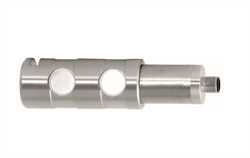
Product Name: Tecsis F53S1 Load Pin
Brand: Tecsis
Product Code: F53S1
Tags: Tecsis
Tecsis F53S1 Load
F53S1 Load
F53S1 Pin
Tecsis Pin
Tecsis Load Pin
Tecsis Load
Tecsis Load Pin
Tecsis Load
Tecsis F53S1 Load Pin
Tecsis F53S1 Pin
F53S1 Load Pin
F53S1 Load
Load Pin
Tecsis F53S1 Pin
F53S1 Pin
Tecsis F53S1
Load Pin
Are you interested in the product Tecsis F53S1 Load Pin from manufacturer Tecsis with code F53S1? Contact us now and get offer. Imtek Engineering, the fastest and most reliable industrial equipment supplier in the world, will offer you the best offer!
Get Offer With E-Mail: info@im-tek.com
Get a offer for Tecsis F53S1 Load Pin from our live support team now!
Applications of the load pin Crane systems and hoists Industrial weighing technology Machine building and plant construction, manufacturing automation Theatre and stage construction Chemistry and petrochemistry Special features of the load pin Measuring ranges 0 ... 5 kN up to 0 ... 200 kN Corrosion-resistant stainless steel design Integrated amplifier High long-term stability, high shock and vibration resistance Good reproducibility, simple installation Description of the load pin Load pins are designed for static and dynamic measurement tasks. They directly replace existing bolts and determine the tension and compression forces in a wide range of applications. The load pins of this series are often used in hoist and crane systems, as well as for special machine constructions, in pulleys, rope winches, fork heads and rolling bearings. These load pins with thin-film technology are approved for hazardous areas, such as in the mining industry, and also for use in stage/event technology. Furthermore, the load pins have been tested by the classification society, DNV GL: The DNVGL-ST-0378 standard (“Standard for offshore and platform lifting appliances”) and DNVGL-ST-0377 standard (“Standard for shipboard lifting appliances”) are fulfilled. Thus they can also be used in lifting technology in the offshore and shipping sectors. A further area of application for load pins is in manufacturing automation. Appropriate technical and regional approvals (ATEX, IECEx, SIL and UL) are available as an option. The load pins of this series are made of high-strength, corrosionresistant stainless steel 1.4542, which is particularly suitable for the application areas of the force transducers. Besides the standard active current and voltage outputs (4 ... 20 mA / 0 ... 10 V) also digital outputs (CANopen®) are available as output signals. Redundant output signals are possible.